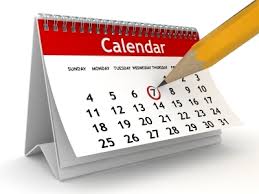The summer garden is pretty much our reward for all the hard work from March through June. During these lazy warm days the perennial and annual gardens are strutting their colors and the harvest of the first tomatoes and cucumbers means BLT’s, thick juicy sandwiches and robust salads. Following are some tips from the University of Tennessee Institute of Agriculture for your July gardening calendar:
Perennials, Annuals, & Bulbs
- This is a great month to watch for cutflowers to enjoy inside your home as well as those to dry for everlastings.
- Keep your perennials deadheaded to keep them flowering. Be sure to remove the fading flowers down to a leaf node or new bud.
- Cut back by one-third early planted annuals that are getting leggy or out of control to keep them looking good into the fall. Give them a shot of a water-soluble fertilizer. Good candidates include impatiens, salvia, sweet potato vine, trailing or ground-cover type petunias and herbs, such as basil.
- Tall, fall-flowering perennials such as swamp sunflower, joe-pye weed, iron weed, mums, and asters can be cut back by one-third to one-half to reduce their ultimate height and prevent them from lodging (falling over).
Shrubs & Trees
- Cut old flower heads off Hydrangea arborescens, such as ‘Annabellle’ to get a second but smaller flush of flowers.
- Avoid pruning spring-flowering shrubs from now until next spring. Anything you remove now will also be removing next year’s flowers. Shrubs that bloom in the spring include azaleas, camellias, witch hazels, and rhododendrons. Now is the time to prune overgrown oakleaf and mophead hydrangeas.
- July is a good month to prune “bleeder” trees, such as maples, dogwood, elm, birch and other trees that bleed when pruned in winter.
- Layering easily propagates many plants. Hydrangeas, viburnums, weigela, trumpet honeysuckle, Carolina jessamine, and climbing roses are a few plants that will root if tlhe stems are fastened down and covered with soil.
Fruits & Veggies
- Harvest vegetables regularly from your garden to keep it productive.
- It may become necessary to cover fruit trees with netting to protect fruit from the birds.
- Blackberries need to be pruned after their harvest is ended. Remove the dying fruiting canes and tip back the vigorous, new growth two or three times to form a dense hedge for greater fruit production.
- Start planning your fall vegetable garden. Late July is the time to start seeding your winter broccoli, cabbage, cauliflower, and Brussel sprouts to be transplanted into the garden in mid-August.
Odds & Ends
- Keep bird baths clean and filled with water through the hot weather.


